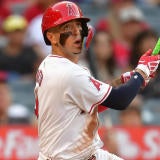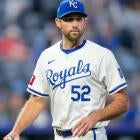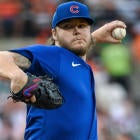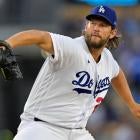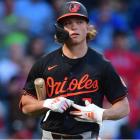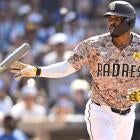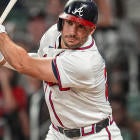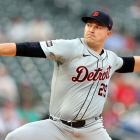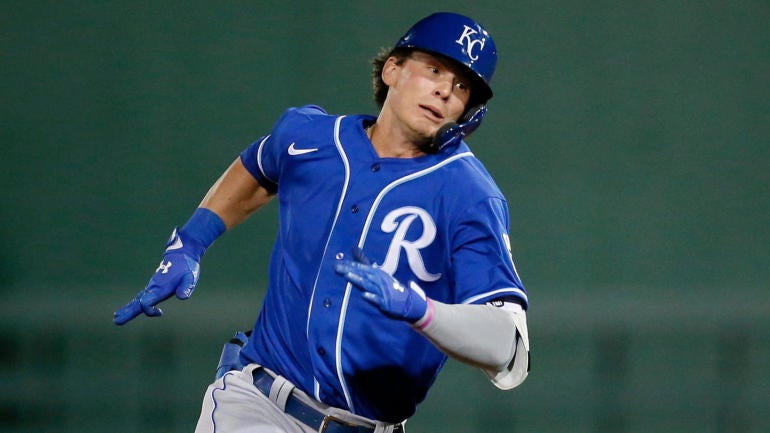
On the 100th day, the MLB lockout has come to an end. The owners officially ratified the new deal Thursday, ending the second-longest work stoppage in MLB history. Free agency is once again open -- with many big names still left unsigned -- spring training camps will open March 11, and we've got a four-week mad dash to get ready for the start of the season. And there's a lot you need to know about as you start to ramp up your own preparations for Fantasy drafts and the start of the season.
The new CBA will change many facets about MLB for the next five seasons, from player contracts to prospect call ups and more, plus there are all of the immediate changes to the game that are coming in 2022. Some of the details haven't been officially made public, but we know the most important details already.
Here's what you need to know for 2022 and beyond now that baseball is officially back:
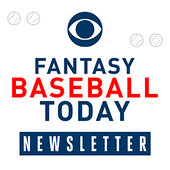
Fantasy Baseball Today Newsletter
Your Cheat Code To Fantasy Baseball
You're destined to gain an edge over your friends with advice from the award-winning FBT crew.
Thanks for signing up!
Keep an eye on your inbox.
Sorry!
There was an error processing your subscription.
The season starts April 7
And we're going to get a full 162-game schedule. That despite MLB announcing the first two weeks of the season had been "removed from the schedule" in light of the protracted negotiations. The season will start roughly one week after it was initially set to, with the full schedule being fit into a bit of a contracted timetable -- expected more doubleheaders in 2022 than normal.
Spring training games will begin March 17 or 18, which means we're really only going to have about two and a half weeks of exhibition games -- expect to see fewer players with numbers in the high double digits as teams focus on getting their 40-man rosters prepped. Players not on the 40-man roster have been in spring training for a few weeks, so they need the game reps less.
The shortened spring training schedule will leave less time for playing time battles to sort themselves out, so that could put incumbents in a better position. The biggest impact, however, will be on pitchers, as teams will likely only have three, maybe four, opportunities to go through their rotation before the season starts. That may not be a big issue for some veterans, but for younger pitchers, those reps could be key. Don't be surprised if we see more 3-4 inning starts in the first few weeks of the season than usual.
That's not a reason to avoid any specific pitchers, though. Even the younger pitchers may be better served by shorter outings, allowing them to remain in the rotation longer deep into the season even with innings limits. That's not a bad thing, necessarily. The concern for the pitcher pool as a whole will be injury risk with such a rapid ramp up, however, knowing exactly who might be affected is effectively impossible, and shouldn't really factor into your decision making.
The delayed start of the season does give a bit more time for someone like Ronald Acuña to get to full strength in his recovery from an injury, though with Opening Day pushed back just a week, it doesn't make much of a difference. We won't know whether Acuña is likely to be ready until he reports to camp and we get some official updates from him and the team. That's also true of the likes of Jacob deGrom, Clayton Kershaw, Max Muncy, Lance McCullers, Carlos Rodon, Mike Clevinger and others. Those situations aren't all identical, of course: In deGrom's (elbow) case, whether he's currently healthy wouldn't really tell us much about his ability to make it through a full season; with someone like Muncy (elbow) or Rodon (shoulder), we just legitimately don't know if and when they'll be able to play at all at this point. Hopefully those updates come soon.
You can't just move all injured or injury-risk players up your draft boards with the start of the season delayed, in other words. However, it does mean that someone like Acuña or Clevinger may be able to give you closer to a full season's worth of stats than they otherwise might.
Top prospect changes
One of the biggest hurdles in the negotiations was the MLBPA's attempts to increase compensation for younger players, and that includes trying to curb service time manipulation. Under current rules, teams are incentivized to keep their top prospects down in the minors for at least a week if not multiple months to start a season in order to gain an addition season of club control and cheaper contracts, but the new CBA does feature some mechanisms to limit such shenanigans.
The problem is, it's not clear if those mechanisms will have enough stick or carrot to really change teams' incentives. One change involves additional draft pick compensation for teams who call up top prospects on Opening Day who then finish highly in Rookie of the Year voting, with additional compensation if they finish highly in MVP and Cy Young voting as well. That's not nothing, especially when combined with another new feature that grants players who finish in the top-two in Rookie of the Year voting a full year of service time regardless of when they get called up, further disincentivizing teams from keeping their top prospects down. Hopefully, after a high-profile fight with the union centered around such concerns, teams will be less willing to keep their top prospects down.
That matters most for the top prospects who have already proven themselves in the high minors, with Bobby Witt Jr. being the poster boy for that entering the season. There were rumblings that he might skip the high minors altogether last spring, and after hitting .290 with 33 homers and 29 steals between Double-A and Triple-A last season, it seems like service time considerations are the only reason he might not break camp with the Royals. He's already going off the board inside of the top-100 in ADP right now, so there probably isn't much room for his price to increase, but his power/speed potential makes him an incredibly enticing option to target.
Julio Rodriguez is right there with him in terms of potential and proximity, though he didn't spend quite as much time in Triple-A as Witt in 2021. Still, if the incentives are in place, Rodriguez might be in the Mariners Opening Day lineup, and his price – 276.2 ADP – makes him an even more worthwhile gamble than Witt.
You can check out Scott White's Top 100 Prospects column from earlier in the offseason for more of the top guys who may get the call, but keep Adley Rutschman (C, Orioles), Spencer Torkelson (1B, Tigers), Riley Greene (OF, Tigers), and Shane Baz (SP, Rays) on your draft boards as well. Of course, even if those incentives are in place and teams act on them, it's worth asking whether paying a top prospect premium is worth it. It's easy to point to someone like Fernando Tatis, who made the leap to the majors after just 14 games at Double-A and hit .317/.379/.590 in 84 games as a 20-year-old rookie, as the argument for paying the premium for top prospects.
However, the track record for even top-10 prospects in their rookie seasons isn't as impressive as you might think. From 2012 through 2021, only 31 prospects managed at least 200 plate appearances the year they were ranked in the top 10 by Baseball America, and only 16 managed to post a wRC+ better than 105. That includes guys like Dylan Carlson (.266/.343/.437 in 2021), Eloy Jimenez (.267/.315/.513 in 2019) and Joc Pederson (.210/.346/.417 in 2015) who had a wRC+ better than 110 but also were pretty fringe-y Fantasy options. For every Trea Turner or Bo Bichette, there's a Javier Baez, Byron Buxton, or Xander Bogaerts who needed time to figure it out.
That's not to say you shouldn't be buying these top prospects if their price is right. I did exactly that in my The Great Fantasy Baseball Invitational draft this week, taking Witt at 110th overall and Rodriguez at 311. However, let's not forget the hype that accompanied Jarred Kelenic last season and how disappointing his rookie season was. Just because these guys are expected to be up earlier doesn't mean they'll all be world-beaters. You're chasing upside there, but rookies are inherently volatile assets. Keep that in mind.
One other thing to keep in mind: Because minor-league players who are not on the major-league 40-man roster are not part of the union, spring training has begun as usual for those players. That means that, while Rodriguez and Baz are not at camp right now, Rutschman, Witt, Greene, Torkelson, and plenty of other top prospects are. The minor-league season is still scheduled to start on time, with Triple-A beginning April 5, so those players will be getting their reps in either way.
Other changes on the way
Those are the two key things you need to know about for the 2022 Fantasy season with the new CBA, but there are plenty of other details that could impact the Fantasy landscape over the next few seasons, including:
- Two more playoff teams beginning in 2022 – This was a big win for the owners, as they get an expanded playoffs -- and the additional TV revenues that will come as a result of that. The structure will grant the two division winners in each league with a first-round bye, while the worst division winner and three Wild Card teams will compete in a best-of-three series to open the playoffs. The Wild Card Game is gone, with six teams now making the playoffs in each league, we could see a more active trade deadline -- it'll be easier for some .500-ish team to talk themselves into making a push. More teams trying is never a bad thing for Fantasy.
- New anti-tanking measures – And on the subject of "more teams trying," the new CBA will attempt to disincentivize tanking, specifically of the multi-year sort that we've seen from teams like the Orioles and Astros in the past. There is a new draft lottery, with the top picks being drawn randomly as opposed to given out to the teams with the worst record. However, small-market teams will only be able to be in the lottery for consecutive seasons; a third season with a qualifying record would push them to 10th in the draft order no matter their record. Large market teams will only be eligible for the lottery once; any subsequent season eligible for the lottery will also drop them to 10th no matter their record.
- A ban on defensive shifts by 2023 – We likely won't know any specifics on this for a while, but I'd expect to see something like the rules adopted in Double-A last season on a trial basis: all infielders had to have both feet on the infield dirt when the pitch was released initially, and then all teams had to have two infielders on each side of second base when the pitch was delivered. This figures to benefit left-handed sluggers like Joey Gallo, Max Muncy, and Freddie Freeman most, though someone a slower right-handed hitter like Jose Abreu who hits a lot of grounders to the pull side could see a small impact, too.
- A pitch clock by 2023 – The reported intervals would be between 14 and 19 seconds between each pitch, in line with what was tested at Low-A West in 2021. That saw a drop in average game length from 178.2 minutes to 158.4, per The Ringer. It also saw an increase in offense to go along with it, though whether that was the cause of the increase is impossible to say. It could theoretically lead to more injuries with less rest between pitches, but the data on that is less clear. This would likely impact some pitchers more than others, though predicting who would fall into which category seems nearly impossible.
- Larger bases by 2023 – This one might seem kind of silly and has been met with derision and jokes on social media -- and in the grand scheme of things, it's a small change. However, it would likely lead to fewer collisions at first base like the one that left Cody Bellinger with a fractured fibula last season, and could potentially increase stolen bases – both of which would be welcome changes for Fantasy.
- Changes to free agency – There's a whole lot going on here but the impacts on Fantasy will likely be indirect. The one with the most potential impact is removing draft pick compensation for teams who lose free agents who were given qualifying offers. That has led to delayed signings in recent years – including several stretching well into the season. Free agency stretching well into spring training for high-profile players just isn't ideal for anyone. The catch here is that if the MLBPA and MLB cannot come to an agreement on an International Draft by July 25, draft pick compensation will return for the remainder of the CBA's five-year term.
- Changes to the draft – There have been proposals regarding a draft lottery to try to mitigate attempts by teams to improve their draft position through tanking, which would hopefully lead to teams like the Orioles making more of a good faith attempt to field actual MLB-quality lineups even when they aren't trying to contend. That would hopefully lead to more Fantasy relevant players having everyday jobs, which would be a welcome change.


